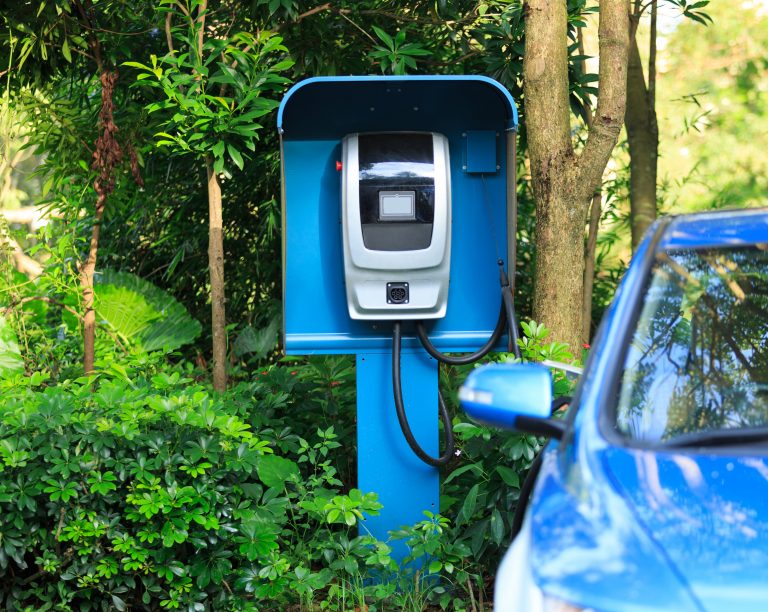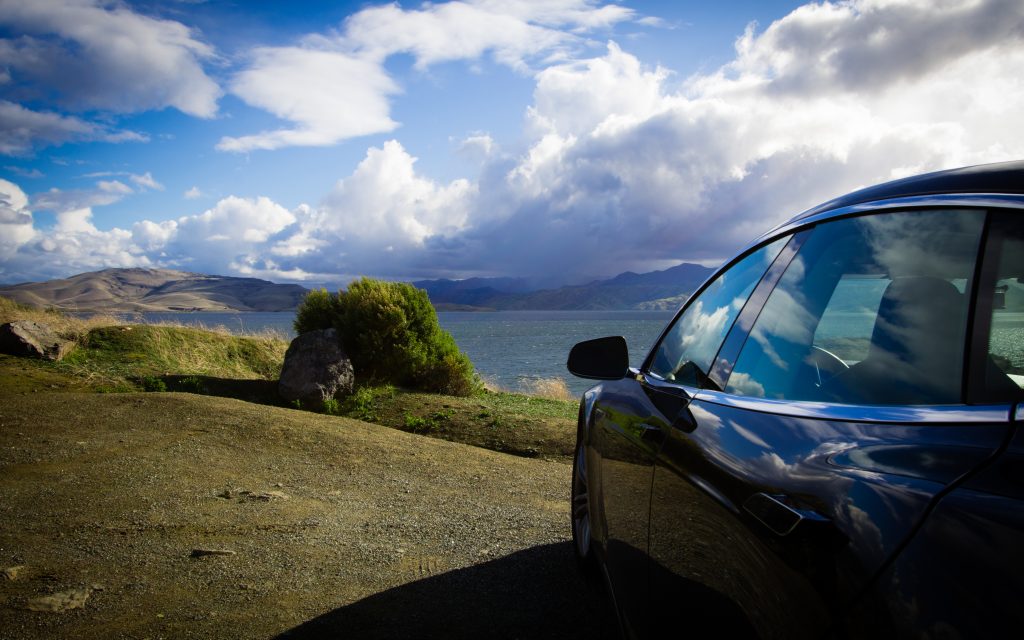The practice laps are over, the lights have signalled and the race is well under way in the electric vehicle (EV) market. Some companies got off to a great start but teams from all the world’s biggest car makers have plans to catch up and take the lead.
Auto-manufacturers know fossil fuel-powered cars will eventually be a thing of the past, but which companies and countries are actually putting plans into action to shape the future of road transport?
Money follows ambitions
Today, the EV market is relatively small. Of the 90 million vehicles sold each year EVs account for just 1%. With sales in 2017 of 100,000 across its three models, Tesla was the dominant player in the field, thanks in part to ample press coverage and its outspoken CEO, but also its sporty design and performance setting it apart in a class typically concerned with economy and efficiency. To put that into perspective, Nissan’s Leaf, the best-selling EV of all time, has only ever sold around 300,000 cars having launched in 2010.
Compare these figures to the 1 million-plus Ford F-Series pickup trucks bought last year – almost entirely in the US alone – and it highlights just how far the EV market has to grow before it begins to push out internal combustion engines (ICEs).
But a massive surge in EV adoption has long been expected – the International Energy Agency forecasts a 24% increase by 2030 to 13 million EV sales. The fuel behind this growth includes improved performance, a greater range of choice, lowering prices and increased marketing spending.
For much of this the onus falls on manufacturers, however they will need the support of governments, electricity grids and energy suppliers to ensure the charging infrastructure required is in place to support the forecast growth. Making EVs mass-market will require significant spending from all parties.
Automakers globally now plan to invest as much a $90 billion into EVs and battery technology, according to Reuters. From the US to Japan, Germany to China, car makers are laying out the timeline for EV investment and sales.
 Manufacturer Manufacturer |  Commitment Commitment |  Date Date |
|---|---|---|
| Tesla | Targets annual sales of 500,000 | 2018 |
| Volvo | Will no longer sell cars solely powered by ICEs | 2019 |
| Nissan | 20% of sales will be zero-emission vehicles | 2020 |
| Jaguar Land Rover | All new models will be electric | 2020 |
| Ford | 40% of global models will be electrified (hybrid and EV) | 2020 |
| Tesla | Targets annual sales of 1 million | 2020 |
| Daimler | Targets annual sales of 100,000 | 2020 |
| Subaru | Will launch first full EV model | 2021 |
| Ford | Will have 13 new electrified models | 2021 |
| Tesla | Targets sales of 100,000 electric heavy-duty lorries | 2022 |
| Porsche | 50% of new sales will be electric | 2023 |
| Volvo | Targets 1 million total sales of EVs | 2025 |
| Daimler | 15-25% of cars produced will be electric | 2025 |
| BMW | 15-25% of sales will be electric | 2025 |
| Volkswagen | Will have 30 new EVs, accounting for 25% of sales | 2025 |
| Ford | 70% of vehicles sold will be electrified (hybrid and EV) | 2025 |
| Renault-Nissan-Mitsubishi Alliance | Targets sales of 2 million medium sized and SUV EVs | 2025 |
| General Motors | Targets sales of 1 million EVs | 2026 |
| Aston Martin | Targets 25% of sales to be electric | 2030 |
| Honda | Targets 2/3 of sales to be electrified | 2030 |
(Sources: BMI Research & The European Federation for Transport and Environment)
Driving electric transformation
Consumer demand is one driving force in EV adoption, but it’s not the only one. Government action will play a pivotal role in forcing the move away from ICEs to hybrid and electric vehicles. Policy makers see the phase out of petrol and diesel cars as key to reaching Paris Agreement goals and many have begun to set ambitious dates for banning new sales of fossil fuel-powered vehicles.
| Date of ban on new sales of petrol and diesel vehicles | Countries |
|---|---|
| 2025 | Norway  |
| 2030 | India  , Denmark , Denmark  Ireland Ireland  , Israel , Israel  , Netherlands , Netherlands  *, Germany *, Germany  **, Iceland **, Iceland  , Slovenia , Slovenia  , Sweden , Sweden  |
| 2035 | United Kingdom  *** *** |
| 2040 | France  , Taiwan , Taiwan  , Sri Lanka , Sri Lanka  |
| 2050 | Costa Rica |
* Ban on all non-emission free vehicles
** Resolution not yet passed
*** Under consultation to move from existing 2040 deadline (and to add hybrids)
China, the world’s largest car market, is also in the process of building a timeline to eliminate fossil fuel-powered vehicles having banned 553 car models in January as part of its efforts to curb air pollution. The country is also subsidising EV purchases and offers a potentially huge market for electric car makers. That’s if they can muscle past domestic manufacturers, which accounted for more than half of all EVs produced globally last year.

EV charging in China
Urban environments are the most affected by exhaust pollution and as a result, individual cities are setting their own, more ambitious standards for vehicles. Paris, Mexico City, Madrid and Athens have set 2025 as the date for a ban on all diesel vehicles from their city centres in the interest of public health.

Visible air pollution over Mexico City
Auto-manufacturers know they need to change, regardless of what some politicians may say, and this will mean tough competition to bring the latest and best electric and hybrid cars onto the market.
But ultimately it won’t just be rivalry that advances EVs further into the mainstream. Governments, the energy industry and car companies will need to work together to ensure infrastructure and policies are in place to move completely away from the petrol and diesel models that have driven the roads for so long.
This means rolling out EV charging infrastructure to facilitate millions of passengers getting from A to B as efficiently as they can with ICEs, albeit with lifestyles changes and commuting habits to allow for longer ‘fuelling’ times. Electricians, housebuilders, employers, retailers and local authorities will need to get busy, retrofitting domestic, public and commercial properties, so people can charge up when their vehicles are idle. And it requires smart regulation, smarter power grids, new services from energy companies, automation, investment in storage and behind the meter technology to ensure the necessary power is available when and where it’s needed.
The race may be on and there will be winners and losers along the way, but it’s one many people would like to see end in a draw.














